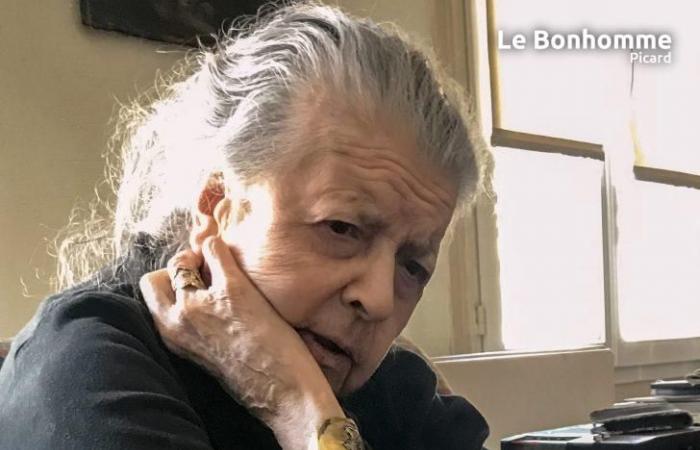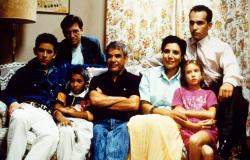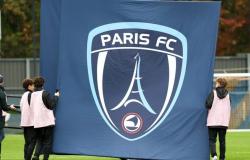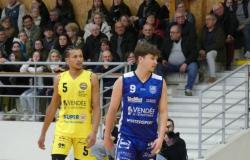Editions Dupuis announce this Wednesday, November 6, the death of resistance fighter Madeleine Riffaud. She was 100 years old.
We can be spectators of our lives, undergo events, only witness the upheavals that surround us. Very early on, Madeleine Riffaud decided to be an actress in her own life.
Born on August 23, 1924 in Arvillers (Somme), Madeleine developed a strength of character which pushed her to want to resist the Germans in 1940, when she was only 16 years old. After a stay of several months in a sanatorium in Isère, she went to Paris in 1942 to join the Internal Resistance. With Rainer as her nom de guerre, in homage to the Austrian writer Rainer Maria Rilke, Madeleine goes on missions, learns all the tricks of clandestine fighters, and climbs the ranks in the organization. In 1944, she joined the FTP (Francs-tireurs et partisans).
In July of the same year, she shot dead a German officer in broad daylight on the Solferino bridge. Unfortunately, she was immediately arrested by the militia, who handed her over to the Gestapo. After several weeks of torture during which Madeleine does not speak, she is sentenced to death.
On August 15, she managed to escape from the “convoy of 57,000”, the last convoy of political deportees leaving Paris for Buchenwald and Ravensbrück. On August 19, it was operational again to participate in the Parisian insurrection, in the 19th arrondissement.
At the head of a detachment of three men, she stopped a train of German soldiers in the Buttes-Chaumont tunnel and took 80 prisoners. Then she took part in the bitter battle around the Place de la République, ending the liberation of Paris.
She then tried, like her comrades in arms, to enlist in the regular army to continue the fight all the way to Germany. A minor (she is not yet 21) and suffering from tuberculosis, she is rejected. The war is over for her, leaving her broken by weeks of torture and post-traumatic stress disorder. The writer Claude Roy, whom she had met at the sanatorium, introduced her to Paul Éluard, who took her under his wing. The author of the poem Liberty is struck both by the young woman's state of extreme exhaustion and by the poems she wrote during the war. He introduced him to Picasso, Vercors, and published his compositions in L'Éterelle Revue.
Thanks to Éluard, she began a career as a journalist, first in Ce Soir, directed by Louis Aragon, then in La Vie Ouvrière, a CGT weekly. Madeleine covered the national strikes of 1947 and those of miners in 1948. In 1954, she left for Vietnam to monitor the proper application of the Geneva agreements. She married the poet Nguyên Đình Thi, whom she met at the Berlin Youth Festival 3 years previously. She reunites with Ho Chi Minh, whom she met in Paris in 1946.
mixed couples being banned by the Chinese who secretly took power, she returned to France in 1955. She regained her footing with journalism. In 1957, Madeleine joined the daily newspaper L'Humanité to cover the Algerian war. In her articles, she denounces the roundups that took place in Paris, the torture of Algerian opponents on Rue des Saussaies, in the same premises where she was tortured in 1944, and the massacre of October 17, 1961.
She regularly goes to Algeria, often clandestinely to escape the OAS (Organization of the Secret Army) which sentenced her to death. In 1962, while passing through Oran, she was the victim of an attack: a military truck hit her car head-on. Broken into 1000 pieces, she spent several months on a hospital bed in Switzerland. In 1964, she returned to Vietnam, for several weeks in the Viet Cong maquis.
She returned there until the end of the conflict in 1973. From this experience in the field, she wrote the books In the Viet Cong Maquis, and In North Vietnam (written under the bombs). In 1974, marked by the hospitalization and death of her mother, Madeleine decided to denounce the working conditions of hospital staff in France. Drawing on her training as a midwife during the war, she was hired as a nurse's aide under a false name and worked for a month in several hospitals.
This investigation gave rise to a book, Les Linges de la nuit, published in 1974, which sold a million copies. Dedicated all her life to those who suffer, Madeleine devoted herself from 1994 to the memory of the Resistance fighters who died for France during the Second World War.
For a long time, she refused to look back on these dark years. But for the fiftieth anniversary of the Liberation, Raymond Aubrac convinced her to tell the younger generations about her experience of the Resistance, in memory of her deceased comrades. Since then, she has continued to pass on her memory. Poet, writer, journalist, lyricist, she became a comic strip writer at the age of 97 by publishing her autobiography “Madeleine, resistance” scripted by JD Morvan and drawn by Dominique Bertail (Dupuis).
She passed away this morning, peacefully in her bed surrounded by her loved ones.
We are thinking particularly of Philippe D., Éloïse, Ana, Samir, Ray, Liliane, Michel, Jorge, Philippe R., Robert, his godchildren Benoît and Colin, Nadia, Babette, Jean-Marc, Mathieu, Dominique and JD…
The native of Arvillers recounts her past as a resistance fighter in a comic book trilogy.
She could hardly talk about it, so she decided to write it down and even illustrate it. Her past as a resistance fighter in Paris during the Second World War, Madeleine Riffaud (native ofArvillers) has been revealing it little by little for thirty years. She increased the number of meetings in schools ” my memory came back to life. They asked me nice questions, about practical aspects. These kids gave me back my memory. It’s been over 25 years now, and I’m still going”she explained to AFP at the time of the release of the first volume.
After a first book of interviews, a documentary, Madeleine Riffaud let herself be tempted by the comic strip adventure. Under the pen of Jean-David Morvan and the features of Dominique Bertail, Madeleine Résistante (or her code name Rainer) will experience multiple adventures becoming an actress and a privileged witness of her time.
Specific memories
Three volumes are expected: once the memories returned, the Samarian was determined to say the least. The screenwriter of “Madeleine, Résistante”, Jean-David Morvan, confides that he ” hundreds of hours of recording. You have to cut it, it's a lot of work. Madeleine tells the story in a very organic way, with digressions, but she follows a thread, and always ends up returning to it.”
And it wants to be precise: ” Yesterday he [Jean-David Morvan] was quiet at home, and I phoned him, in a hurry: Jean-David, this morning I woke up with a start, I found everything from rue des Saussaies [l’un des sièges de la Gestapo à Paris]listen to me! Now the moment is looming when I will have to talk about my arrest, and the torture centers. It gives me nightmares. I don’t like it that much.”
A school in his name in Ravenel
The moment was solemn, Tuesday June 25, 2019: at the end of the school year, the Madeleine Riffaud school was inaugurated in the presence of the mayor, Bernard Merlin, the sub-prefect of Clermont Michaël Chevrier, representatives of national education , the school principal… and of course the children. Because the name of their school is the result of long research carried out by the schoolchildren.
Two years ago, the municipal council proposed to the school management to suggest a name for the municipal schools, it was recalled in the municipality's June municipal bulletin. The schoolchildren had remembered several names before settling on that of Madeleine Riffaud.
She will be 95 on August 23
This native of Santerre, in the Somme, will be 95 years old on August 23. Her journey is rich: she was a resistance fighter, poet, journalist and war correspondent.
Her investment in the resistance began in 1942, when she was still a minor. Two years later, she joined the FTP (francs-tireurs et partisans). Delivered to the Gestapo after having shot down an officer of the occupying army, she was sentenced to death. She escapes deportation, is arrested again, then is finally released as part of a prisoner exchange. His commitment ended at the end of the fighting for the Liberation of Paris.
After 1945, she worked for the daily The evening Then Working life or even Humanitya title for which she covers the Algerian war. She also wrote the bestseller The linens of the nightdrawn from her experience as a nursing assistant in a Parisian hospital.
There is no doubt that the inscription of her name on the pediment of a school particularly resonates in the mind of this daughter of teachers who grew up in Picardy.






